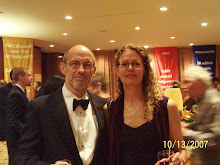Junk shot or space junk shotting?
In a 1978 paper titled “Collision Frequency of Artificial Satellites: The creation of a Debris Belt” Donald Kessler, now a retired NASA astrophysicist, outlined a catastrophic scenario: Old satellites and other space debris accumulating until collisions become inevitable. As colliding objects shatter into countless equally destructive bits, a chain reaction of more collisions will quickly follow. Kessler wrote “The result would be an exponential increase in the number of objects with time … creating a belt of debris around the Earth.” The consequences appeared self evident and NASA responded by setting up the Orbital Debris Program Office to study the problem and put Kessler in charge.
Kessler prediction of a runaway cascade of collisions happening in 30 to 40 years became known as the Kessler Syndrome. It was a threat that even science fiction writer Arthur C. Clark foresaw in his 1979 novel “The Fountains of Paradise”. Clark’s future scenario warned of a lethal belt of space junk cutting earth off from space by destroying our vital communications satellites and potentially sinking us “back into the dark age” [where] “the resultant chaos, disease and starvation would destroy much of the human race.” Now knowing our increasing dependence on satellites for everything from weather and crop forecasting to finding energy sources or tracking WMD, Clark may not be too far off the mark.
Taking the high road Kessler and his ODPO colleagues developed a set of guide lines in hopes of slowing the accumulation of space junk. They proposed rules that would limit what could be abandoned in space and they required satellite operators to help clean up the geosynchronous belt 22,400 miles above Earth. The good news is that by 2008, similar guidelines had been adopted by most of the major space agencies around the world. The bad news is that ‘most’ isn’t good enough and for at least three other reasons this hopeful progress is virtually irrelevant.
First, the guidelines are voluntary and not enforceable. No world law exists to punish offenders and not global agency is funded to monitor or address this growing threat. Second, controls are expensive to implement and even without a global recession, other earthy priorities are likely to take precedent. Especially when each nation sees the value of satellites as essential to their own individual national security concerns. Third, if just one nation chooses to ignore the guidelines for any reason, all other nations will suffer.
Last, a single collision event could undo any benefits from universal adherence to the rules -- as demonstrated January 11, 2007 when China was showing it’s anti-satellite capacity to the US and launched a missile that hit one of its own retired satellites. The single hit created 3000 traceable pieces. Relatively new to space efforts China already accounts for nearly a third of all space junk attributed to specific launches. They are now very close to matching US and Russian numbers.
The real surprise came on February 10, 2009 when two satellites, Iridium 33 (relaying phone conversations) and Cosmos 2251 (a old Russian communication outpost) each closing in at 5 miles per second, collided creating roughly 2,100 new pieces of junk expanding into a cloud of lethal debris, each capable of taking out any other satellite in its path. Now the “Kessler Syndrome” was real.
Almost immediately our military’s Space Surveillance Network doubled it’s computer capacity and by early 2010 was tracking 1000 active satellites and rocket fragments, and another 15,300 objects the size of a fist or larger. It still ignores an estimated 500,000 smaller fragments of junk the size of a marble or larger, each still capable of taking out a satellite.
NASA officials acknowledge that orbital debris is the greatest threat to the $100 billion International Space Station and its continued proliferation threatens future space missions and global communications (mobile phones networks, satellite television, radio broadcasts, weather tracking, military surveillance and GPS devises that help us target terrorists in Kandahar or find a gas station in Kansas) which almost all relate to our individual freedoms and national security.
It should be clear to all, not just US spy satellite enthusiasts, that space junk removal is essential to all human advancements. And, while creative ideas for removing junk from orbit are plentiful -- funding and political will to do something in every nation are not.
Even if the US took this task on alone, it would only takes one renegade nation unwilling to participate, or intentionally sabotaging our efforts (see cyber war capacity) for the Kessler Syndrome to put us on a roulette wheel back into the dark ages.
Anything short of a globally funded, implemented and enforced space junk cleanup program would be a serious problem for all civilized nations. Only in places like Haiti will it be relatively irrelevant.
Labels: Kessler Syndrome

